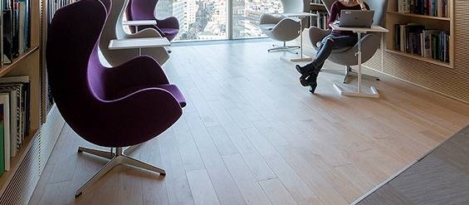September 19, 2016
London’s sky high property costs driving uptake of coworking, claims report 0
 Start-up tech firms in London face the world’s highest property costs and the result is a boom in coworking, according to a report from Knight Frank. The research, undertaken as part of Knight Frank’s 2017 Global Cities Report, examines the cost of leasing and fitting-out 600 sq ft of office space in the tech and creative districts of the world’s leading cities. Intense demand for space in Shoreditch, London, has seen start-up office costs soar with Knight Frank calculating 600 sq ft of office space to cost US$66,706 per year – the highest of any creative district in the world. This is followed by Brooklyn in New York (US$62,736), Mid-Market in San Francisco (US$61,680), 1st, 2nd and 9th Districts in Paris (US$57,426) and the Seaport District in Boston (US$50,700). However, London’s burgeoning coworking market also shows how firms are using the model to overcome the challenge of finding somewhere to work at an appropriate cost.
Start-up tech firms in London face the world’s highest property costs and the result is a boom in coworking, according to a report from Knight Frank. The research, undertaken as part of Knight Frank’s 2017 Global Cities Report, examines the cost of leasing and fitting-out 600 sq ft of office space in the tech and creative districts of the world’s leading cities. Intense demand for space in Shoreditch, London, has seen start-up office costs soar with Knight Frank calculating 600 sq ft of office space to cost US$66,706 per year – the highest of any creative district in the world. This is followed by Brooklyn in New York (US$62,736), Mid-Market in San Francisco (US$61,680), 1st, 2nd and 9th Districts in Paris (US$57,426) and the Seaport District in Boston (US$50,700). However, London’s burgeoning coworking market also shows how firms are using the model to overcome the challenge of finding somewhere to work at an appropriate cost.
























 While the number of independent workers in the US gig economy is expected to grow to 54 million people by 2020 and some 40 percent of workers have already experienced it according to
While the number of independent workers in the US gig economy is expected to grow to 54 million people by 2020 and some 40 percent of workers have already experienced it according to 











